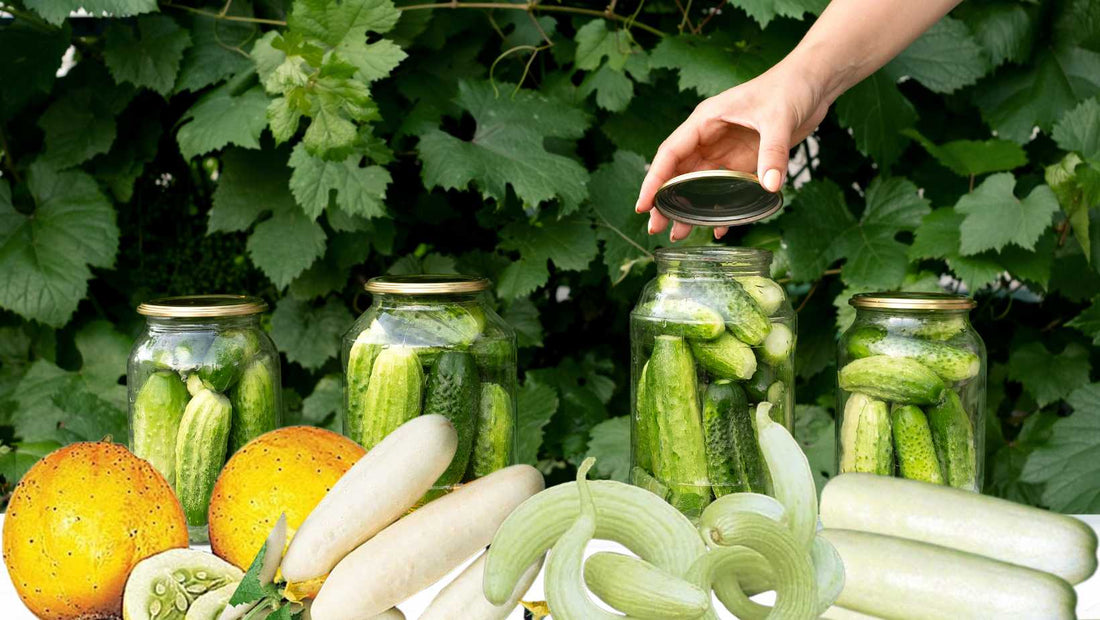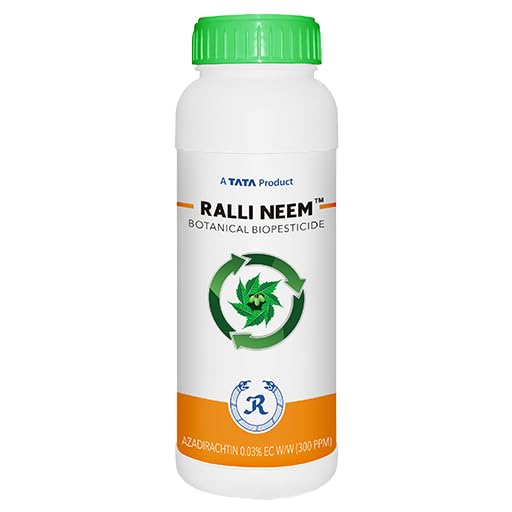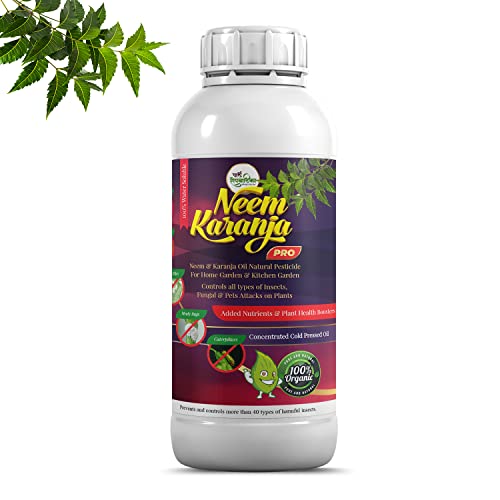
Exploring the Diversity of Cucumbers: Varieties, Uses, and Cultivation Practices
Share
Cucumbers stand as a crucial crop for our Indian farmers, playing a vital role in both our economy and nutritional landscape. Across our diverse nation, especially in Maharashtra, Karnataka, Andhra Pradesh, and Tamil Nadu, farmers cultivate cucumbers, recognizing their economic significance.
There exists a multitude of cucumber varieties, each boasting distinct flavors, textures, and applications. Farmers, aiming to cater to diverse consumer preferences, can choose to cultivate various types:
| Cucumber Variety | Description | Common Uses |
|---|---|---|
| English cucumber | Long, slender with smooth, thin skin and mild flavor | Salads, sandwiches |
| Persian cucumber | Small, thin-skinned with sweet flavor and crisp texture | Fresh consumption, salads, dips |
| Kirby cucumber | Short, thick with bumpy skin and crisp texture | Pickling |
| Lemon cucumber | Small, round with lemon-like appearance and flavor | Salads, cocktails |
| Armenian cucumber | Long, slender with smooth, thin skin and sweet flavor | Salads, soups |
| Japanese cucumber | Long, slender with crisp texture and mild flavor | Sushi, stir-fries |
| Beit Alpha cucumber | Long, slender with smooth, thin skin and mild flavor | Salads, sandwiches |
| Slicing cucumber | Best eaten fresh, sliced or diced, has mild flavor and crisp texture | Fresh consumption |
| White Wonder cucumber | White variety of slicing cucumber, has mild flavor and crisp texture | Fresh consumption |
| Gherkin cucumber | Small, pickled with sour flavor and crunchy texture | Garnish, condiment |
The cultivation of cucumbers provides numerous advantages for Indian farmers:
1. High Yield and Profitability: Cucumbers are high-yielding, offering multiple harvests throughout the year. With proper cultivation practices, farmers can achieve significant profits.
2. Adaptability to Diverse Conditions: Cucumbers thrive in various climatic conditions, allowing cultivation in different regions of India. This adaptability enables farmers to diversify their crops and enhance income potential.
3. Domestic and Export Market Potential:
- Domestic Market: With a growing population and increased urbanization, the demand for fresh vegetables, including cucumbers, is expected to rise steadily.
- Export Market: India's favorable climatic conditions and competitive production costs position it as a strong cucumber exporter. Strategic marketing and entry into new markets can boost export earnings.
4. Prospects as a Fresh Vegetable and Processed Food:
- Fresh Vegetable: Cucumbers, enjoyed for their refreshing flavor and versatility, are a staple in Indian kitchens.
- Processed Products: Cucumber pickles, juice, and condiments offer additional market opportunities, reflecting the versatility of cucumber cultivation.
5. Crop Duration, Life Cycle, and Timetable:
- Duration: Cucumber cultivation spans 60-80 days, from sowing to harvest, with three main stages: Seedling, Vegetative, and Fruiting.
- Timetable: Varies by region and climate, but a general timetable includes sowing in June-July and January-February, transplanting 2-3 weeks later, flowering at 4-5 weeks post-transplanting, fruiting at 6-7 weeks, and harvesting at 10-12 weeks.
6. Important Fungal Diseases Affecting Cucumber:
- Anthracnose: Causes sunken lesions on fruits, leading to rot and yield reduction.
- Powdery Mildew: Forms white powdery growth, reducing photosynthetic efficiency.
- Downy Mildew: Causes yellowing and distortion of leaves, impacting plant growth and fruit quality.
7. Mitigating Fungal Diseases:
- Selection of Resistant Varieties
- Crop Rotation
- Cultural Practices (proper soil drainage, air circulation, and humidity control)
- Fungicide Applications (judicious use in severe cases)
8. Important Pest Affecting Cucumber:Cucumber cultivation in India is frequently hampered by a variety of insect pests that can cause significant yield losses. Here are some of the most prevalent pests affecting cucumber crops in India and effective control measures:
- Cucumber Beetles: These striped or spotted beetles can cause direct damage to leaves, flowers, and fruits. They also act as vectors for bacterial wilt, a serious disease that can wilt and kill cucumber plants.
- Aphids: These tiny, soft-bodied insects suck sap from leaves and stems, causing stunting, leaf distortion, and honeydew secretion that attracts sooty mold. Aphids also transmit viral diseases, such as cucumber mosaic virus.
- Whiteflies: These tiny, white insects suck sap from leaves, causing yellowing, stunting, and reduced fruit quality. They also transmit viral diseases, such as watermelon mosaic virus.
- Thrips: These slender, yellow-brown insects suck sap from flowers and fruits, causing scarring, deformation, and reduced fruit quality. They also transmit viral diseases, such as tomato spotted wilt virus.
- Spider Mites: These tiny, spider-like pests feed on plant juices, causing stippling, yellowing, and bronzing of leaves. Severe infestations can lead to defoliation and plant death.
- Fruit fly: Female fruit fly lay eggs underskin overy of developing flower and fruit. Maggot develop from these eggs eat the flesh of develping fruits that ruin the economic value of the fruit.
9. Mitigating Pests:
- Crop Rotation:Rotate cucumber crops with non-host plants to break pest cycles and reduce populations.
- Field Sanitation:Remove and destroy weeds and crop debris that can harbor pests and diseases.
- Monitoring and Early Detection: Regularly inspect plants for signs of pests and diseases. Early detection and intervention can prevent widespread damage. Use of sticky traps and pheromone traps help early detection and control of pests.
- Integrated Pest Management (IPM): Utilize a combination of cultural, biological, and chemical control methods to minimize pesticide use and promote sustainable pest management.
By implementing these measures, farmers can effectively manage fungal diseases and pest infestation ensuring the productivity and profitability of their cucumber crops.
In conclusion, cucumber cultivation plays a crucial role in Indian agriculture, offering economic benefits and nutritional value. With its adaptability to diverse conditions and suitability for processing, cucumbers hold immense potential for farmers. By adopting sustainable cultivation practices and effective disease management strategies, Indian farmers can maximize cucumber yields and contribute significantly to the country's food security and economic growth. As the demand for fresh and processed cucumbers continues to rise, Indian farmers are well-positioned to capitalize on this lucrative market and enhance their livelihoods










